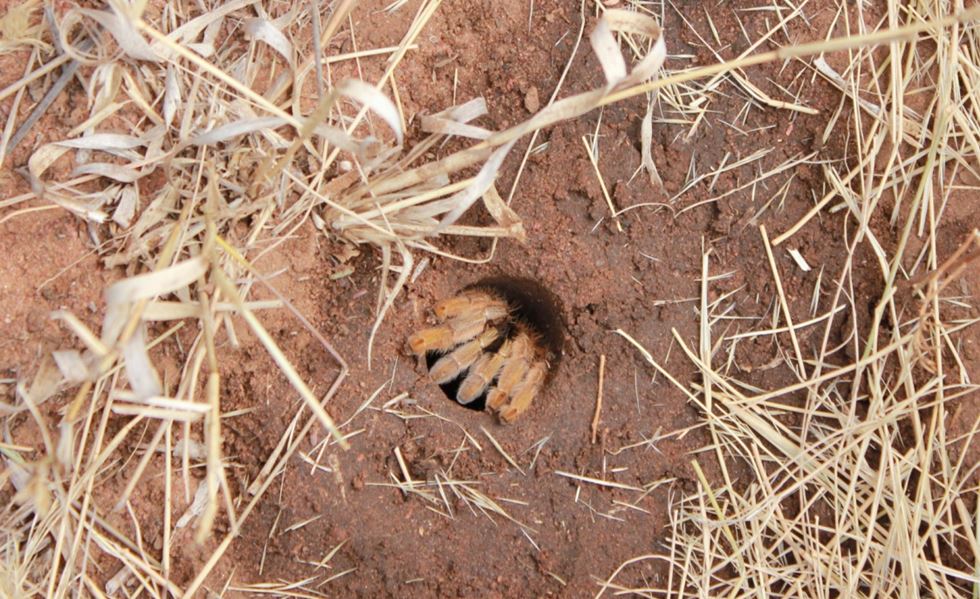Let’s go on a spider safari
This one goes out to all you screamers who won’t pick up a spider in a paper cup and put it outside. In case it, you know, leaps for your throat or lays eggs in your hairdo or something else that happens all the time.
In South Africa, a road-widening project ground to a halt last year when workers found a bunch of baboon spider burrows in the way. The two species encountered, Augacephalus junodi and Ceratogyrus darlingi, are protected, so the spiders had to be relocated.

Helloooo, Blondie. Augacephalus junodi, the golden baboon spider, had to pick up stakes when the road came through.
Augacephalus is one of the most beautiful species names ever. Auga refers to the rays of the sun and cephalus means head; the pattern on this spider’s cephalothorax looks like a big, golden sunburst. Ceratogyrus has a little horn.
Baboon spiders are tarantulas. Hairy, hefty. They even sound big, though by tarantula standards they’re not especially. Tarantula hobbyists like to show them off, which means the populations are at risk from the illegal pet trade.
So did the road workers all faint in unison at the prospect of herding tarantulas?
Of course not: South Africans, folks! they’re tough. They wrestle lions before breakfast. Instead the workers, advised by a team of scientists, rounded up the big spiders by rooting them out of their burrows and collecting them by hand. Out of 400 spiders relocated (cue “Kingdom of the Spiders” footage, hello Bill Shatner), only two of them bit anybody, and the game-reserve adviser on the project shrugged it off with, “It is like a bee sting.”

A scientist (you can tell, only scientists wear wristwatches anymore) shows one of the relocated baboon spiders around her new digs. New burrow holes were dug with an auger, with grass and such added for curb appeal.
I love this place! Then the team dug hundreds of artificial burrows for this shy, retiring animal, which lives most of its life in the same hole in the ground. The refugee spiders accepted the carefully located new burrows, which featured moistened soil and a scattering of plant material outside for shelter. The project turned out so well that other construction projects in South Africa started sending their spiders to the new habitat, too. Adjust your safari plans accordingly.
A side note: I’m sure you’ve noticed how eager energy companies are to trumpet their environmental credentials. These spider wranglers worked for a South African mining concern called Exxaro, which was widening a road to a power plant. I know nothing of their record and of course this story makes them look good—especially the part where some of the spiders set up housekeeping in a pile of ash next to another coal-fired power plant. Still, if oil companies can pass themselves off as cormorant-hugging do-gooders, I suppose this mining concern can use tarantulas as spokes-spiders for sustainability. After all, they coulda just squished them.
